At this time of year, there is a lot of forward planning and looking ahead to be done: Where am I going to be for New Years Eve? What are my 2023 goals? What do I get my secret santa?
Amongst this, it can be easy to let the year slip away without taking the time to reflect on what we’ve achieved. Lucky for me, I have a dedicated team prompting me to reflect on it all for your reading pleasure! And oh what a year we have had in biodiversity campaigning.
Although it wasn’t technically this ‘year’, the first biodiversity memory I have been reflecting on was the Biodiversity Working Group’s 2021 Christmas walk at Bluetts-Block-Piney-Ridge. If you are familiar with the Council’s work, you would have heard (or visited!) the area of woodland and dry forest known as “Bluetts Block” or “Piney Ridge”, remarkable for its rich diversity of plants and animals.
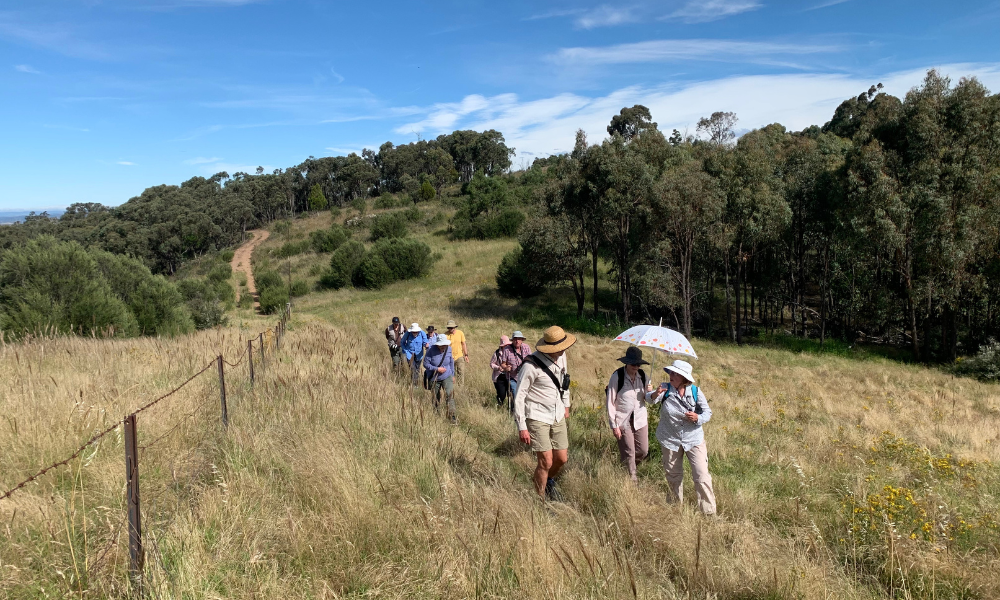
On the theme of Bluetts-Block-Piney-Ridge, this year we supported a petition in the Legislative Assembly calling on the area to be put into reserve. The petition got over 730 signatures in less than 2 months (well over the required 500), and was discussed in Parliament and then referred to the Standing Committee on Planning, Transport and City Services for their inquiry, where it now sits.
Of course, the Conservation Council cannot take all of the credit for this amazing achievement. The Bluetts-Block-Piney-Ridge campaign has very much been a community campaign led by Jean Casburn and Alice Wells. It has been an honour to work alongside such passionate and inspiring people and being present when Jean was awarded ACT Environmentalist of the year in October was another special moment.
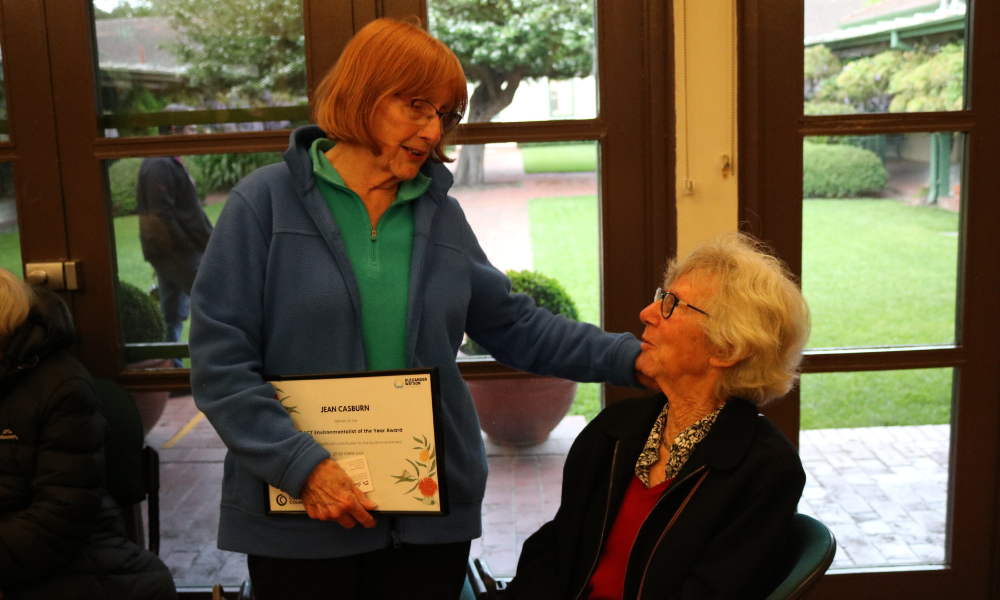
A review of 2022 biodiversity campaigning would be amiss without discussion of the big ticket item: Lawson Grasslands. Lawson Grasslands, in the North of Canberra, has extraordinary natural significance. It contains large areas of Natural Temperate Grasslands and Box-Gum Woodlands; both nationally listed critically-endangered ecological communities. These habitats are home to many unique and significant animals, including, the Gang Gang Cockatoo, Superb Parrot, Golden Sun Moth, Striped Legless Lizard, Perunga Grasshopper, and Key’s Matchstick Grasshopper. In the face of strong community opposition, Defence Housing Australia has progressed plans to develop at the site -, endangering the Grasslands and the creatures they support.
The Conservation Council has been working closely with member groups, Friends of Grasslands, and Ginninderra Catchment Group since 2020 to stop this development. For Lawson Grasslands, 2022 was the year where the rubber really hit the road as we worked to raise awareness in the lead up to the Federal Election and push back against the first round of legislative approvals for the development.
But before we get into all of that, I would like to reminisce over afternoons in early April spent with cups of tea, paint brushes, and a group of passionate volunteers working to create placards and banners for the campaign.


These crafternoons were a part of our pre-federal election effort to raise the profile of the grasslands. In addition to painting banners, a dedicated team of volunteers took time out of their Easter long weekend to distribute 10,000 flyers across the Belconnen region. Labor, Greens, and Independent candidates were quizzed about the Grasslands at the Conservation Council’s Election Forum, highlighting either their outright opposition, or their deep concern. And on the 7th of May over 70 people attended a colourful rally at the Grasslands, where the hard work of the artivists was debuted.
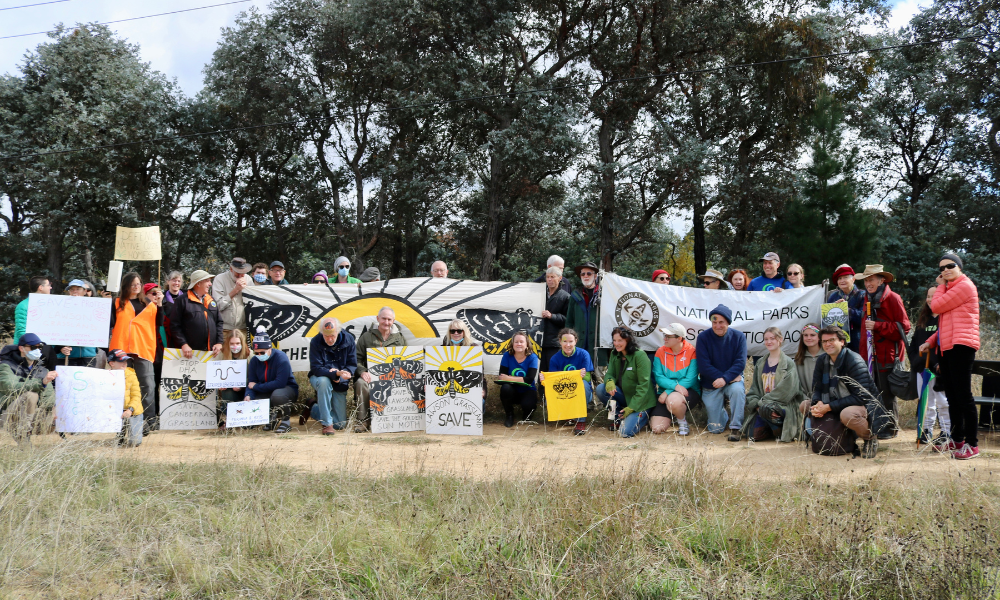
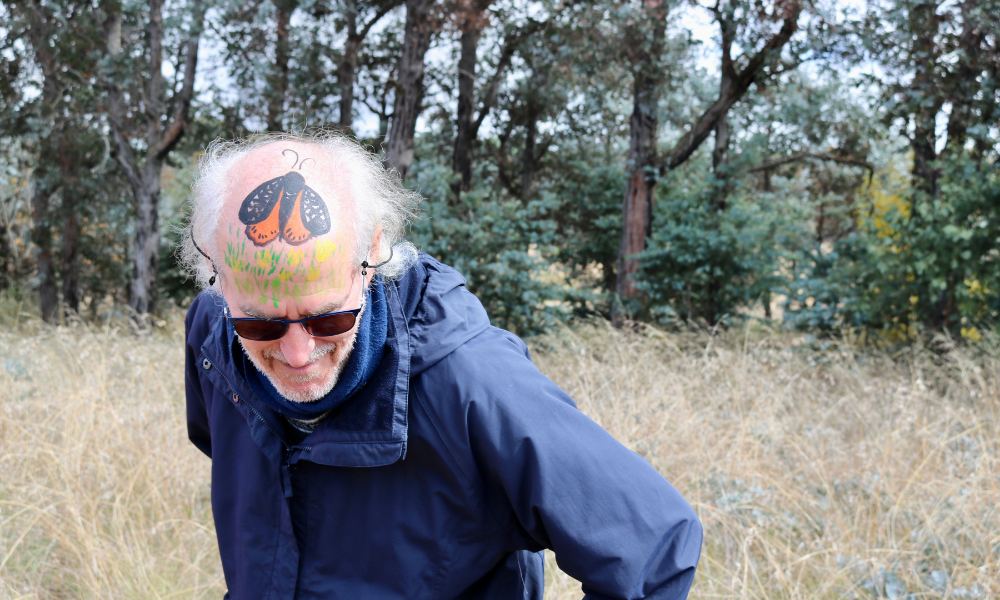
This rally was a special day for me. It was freezing cold, raining on and off, and as the organiser of the rally I was nervous that no one would come. The impressive turnout and excitement of people made my heart sing. Grasslands are not always well understood and appropriately appreciated ecosystems, so being joined by over 70 people to call on election candidates to save Lawson Grasslands despite the blustery conditions was heartening to say the least.
That’s only half the story of Lawson Grasslands this year though. The next big frontier for the campaign was the first round of development approvals under the Environment Protection and Biodiversity Conservation Act (EPBC Act). This process gives the public only 10 days to review an application (often hundreds of pages long) and provide comments on whether it should be controlled, not controlled, or unacceptable. As a part of the consultation process, we made a submission to the Environment Minister outlining why we believe that the proposal to build at Lawson Grasslands is unacceptable – you can read the full submission here.
Ironically, National Threatened Species Day fell on the day that community consultation closed for the proposed development. To recognise this, we gathered outside DHA offices alongside a number of supporters to voice our opposition to this development. Unfortunately, DHA were unable to meet with the group of concerned citizens despite numerous phone calls.
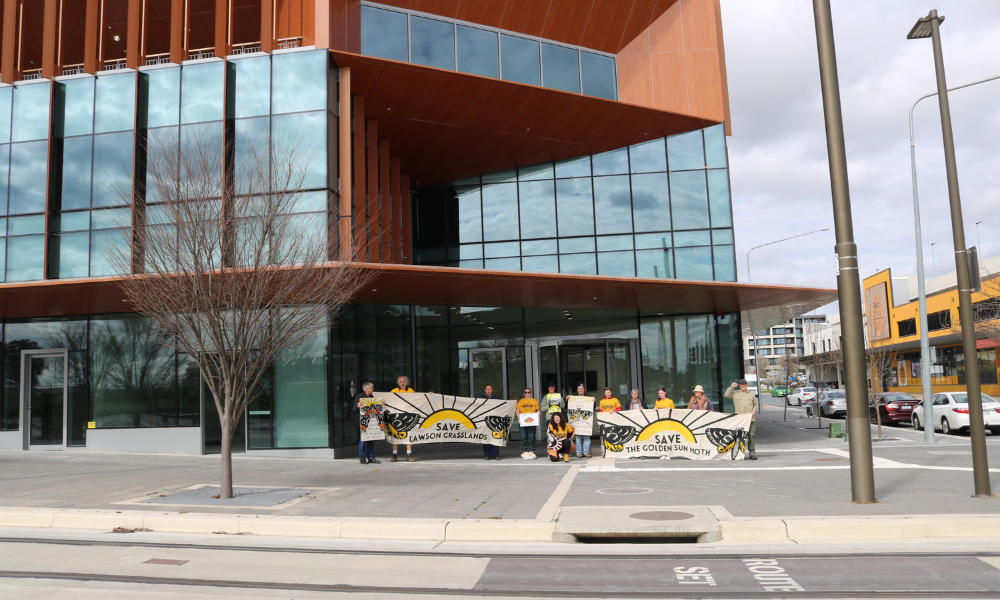
Disappointingly, but unsurprisingly the Minister later determined that the proposed action was not unacceptable, but a “controlled action”, and must be assessed using a full Environmental Impact Statement. While we will continue to pursue the regulatory pathway to oppose the development at Lawson Grasslands, we have also launched a call on the proponents’ majority shareholders Katy Gallagher and Matt Thistlethwaite to withdraw the project.
The fight to save Lawson Grasslands has been and continues to be immense. What I can summarise in this article cannot possibly give appropriate acknowledgment to everyone who continues to volunteer their time to support this campaign. When reading this reflection I hope the message that comes across is that Canberran’s love nature and that the huge amount of biodiversity work that has been achieved in the last 12 months is a product of this love and of huge amounts of sacrifice and commitment from volunteers.
On that note, the last biodiversity reflection that I would like to discuss is the Junior Heritage Walks that ran throughout the year. In total, we ran three walks based on our Junior Heritage Guide showcasing Canberra’s amazing nature at some of the locations in the booklet. Even if I do say so myself, the walks were a huge success and attracted people from across Canberra. Spending time with the next generation of nature advocates was inspiring, and watching them learn from the experts that motivate and encourage me to do my work was another happy memory from this year.

Behind the scenes of all of this work was writing over 10 submissions, talking to the media, attending meetings with decision makers, and catching up with the Biodiversity Working Group to keep things on track.
Thank you to everyone who got involved in protecting the ACT Region’s nature this year. And as we look ahead to 2023, I encourage you to reflect on all you have achieved, and helped your community achieve. And if, like me, you can’t help but start thinking about all of the great things that you want to do next year, then I encourage you to reach out and join in on the Conservation Council’s Biodiversity Working Group because alone we can achieve a little but together we can do so much.
Peta Bulling
Biodiversity Campaigner
